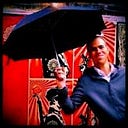When discussing the whole system’s approach to change, we must also consider developing people’s capabilities.
Individuals, far from being static, are constantly adapting to the influences around them. These influences include the organization’s culture, their living or working environment, the information channels they use, their social connections, and broader political, economic, social, and technological trends.
While individuals influence and are affected by the cultures they inhabit, they also interact with others. Understanding collaboration capabilities is as much about people’s relationship with others and their culture as it is about their values, perceptions, and experiences.
Each individual possesses a unique intelligence set, many of which are often overlooked in the workplace. While most workplaces primarily value interpersonal and verbal or logic skills, there are many other forms of intelligence that are equally valuable. These include the ability of a musician or poet to tell a story, the need for a football team to collaborate and learn from each other continuously, the connection of a farmer to nature to be able to cultivate and nurture its crops, and the ability of a photographer to be able to capture the dynamics of a place or community.
https://blog.adioma.com/9-types-of-intelligence-infographic/
I’ve found growing herbs & vegetables and cooking a way to relax and look at how to adapt when I nurture, when I protect or when I let grow. If you want to explore how to genuinely coach rather than manage teams and be comfortable with the unintended consequences of allowing others to lead, check out this documentary on fermentation by @michaelpollan!
What learning styles or intelligences above would you like to develop?
If we want to be even more specific and talk about capabilities for change, we can see that we can borrow roles from other fields to improve how we help people innovate…and guess what? It’s not just the unique serial entrepreneurs or the heroic leaders; there are many innovation styles or Faces of Innovation, as Tom Kelley from IDEO.
Looking at these different faces makes me think that to help people develop different capabilities for change, we also need to create or improve the conditions for it, whether it’s being able to see the world as you’ve never seen it before in a judgemental environment or not being able to overcome barriers.
Below are different ways I’ve taken part in to learn from other styles of change from other fields; some I’ve enjoyed more than others — anthropologist & experimenter more than director — and some I practice more than others — cross pollinator more than storyteller.
Learning
How about using practical ways, like creating living libraries or experiencing the Empathy Museum to be more of an anthropologist, taking part in 100 Design Projects or the 100 Day Challenge to solve problems quickly to be more of an experimenter, or to create a treasure hunt or carry out network mapping to be more of a cross-pollinator.
Organising
You could take on a complex project or, even better, volunteer to help a colleague tackle a sticky problem to be more of a hurdler, take part in a U Lab or the London Policy & Strategy Network to be more of a collaborator, or offer to host a session at the Local Government Innovation Network or take up a coach to be more of a director.
Building
You could design a creative workshop, game or festival which uses all the senses — whether it’s the sights & smells of a market, the sounds of a bus or a flashmob or the blind tasting of an urban game — to be more of an experienced architect, you could reinvent how you use a space on your highstreet, your workspace or even your home space to make you more creative and be more of a set designer, think about how to use space differently — including online — to help people’s wellbeing to be more caregiver, and finally learn about the power of myths in campaigns how to tell or write stories (one of my attempts!) to be more of a storyteller.
These different faces remind me of a strengths habit tracker I’m using with my coach, Strengthscope, which I blog about.
Stepping outside your comfort zone is not just a challenge, but an opportunity for growth. In what ways have you tried learning things that are outside your comfort zone? Embracing these opportunities can lead to personal and professional development.
